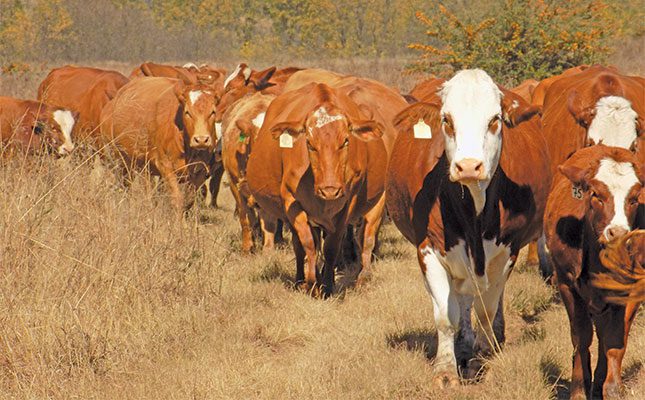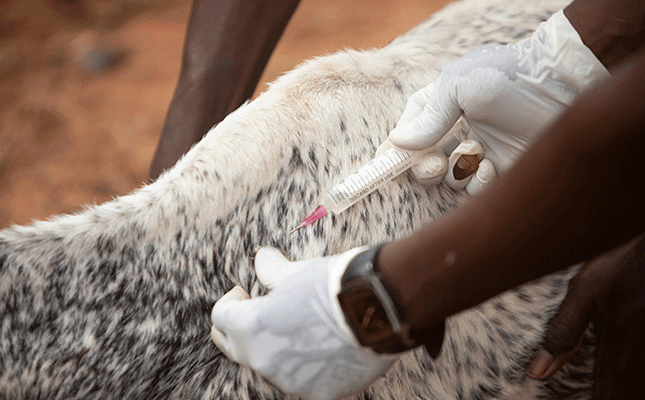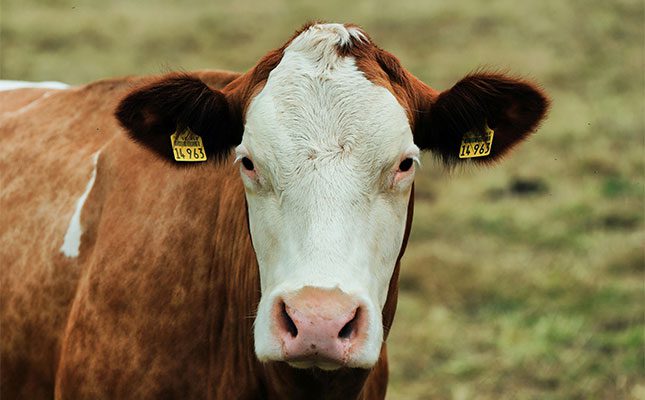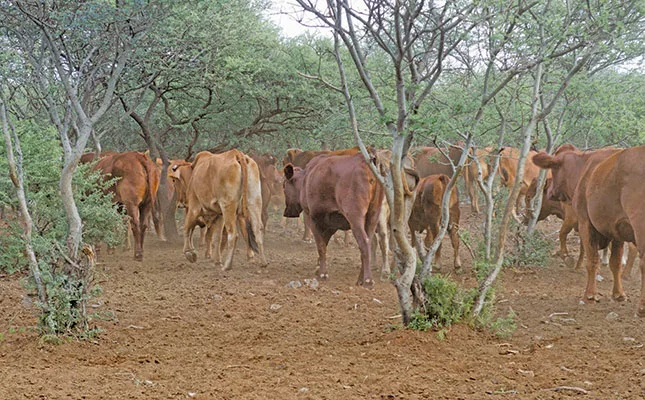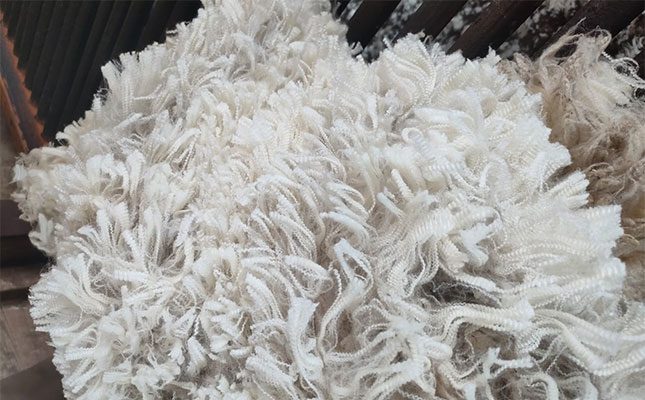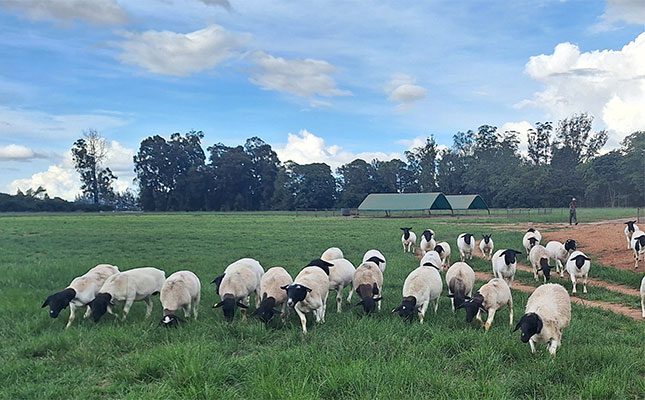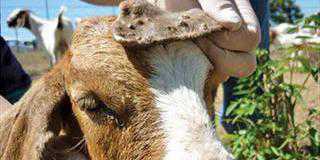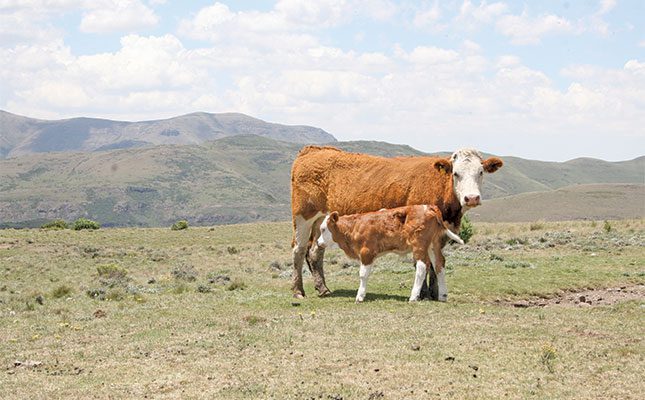
Photo: FW Archive
Temperature monitoring in cattle is a fundamental practice that ensures the health, productivity, and biosecurity of the animals. Accurate temperature readings can help with the early detection of illnesses, thereby improving treatment outcomes and reducing mortality rates.
In this article, Ernest Makua, livestock technical adviser at the Red Meat Industry Services, and Dr Sakhi Nkosi, technical veterinarian at Afrivet, explore the importance of accurate temperature monitoring and best practices for measuring the temperatures of a cattle herd.
Why temperature is important
“The normal body temperature for a calf that is a few days old should be between 38,5C and 40°C. As it grows older, its temperature range decreases slightly to between 38,5C and 39,5°C,” says Makua.
The normal body temperature for mature cattle is slightly lower still. “The body temperature of a mature cow should be between 37,5°C and 39,2°C,” Makua adds. He stresses the importance of monitoring these ranges, as deviations can indicate health issues like high fever, which is often a sign of serious illnesses such as lumpy skin disease and redwater.
According to Makua, temperature monitoring is crucial for the early detection of diseases like pneumonia and mastitis.
“By identifying issues early on, farmers can take timely action to treat symptoms and prevent the spread of disease,” he explains.
Nkosi supports this view, emphasising that temperature monitoring can detect a wide range of conditions.
“High temperatures or fevers in cattle can result from inflammation; infections like heartwater, bovine ephemeral fever, Rift Valley fever, or bluetongue; and metabolic problems or toxin exposure. Identifying changes in body temperature allows for quick intervention and treatment, which is crucial for preventing, managing, and curing diseases. This approach improves treatment effectiveness, as diseases are caught early when animals can still respond better to treatment,” says Nkosi.
Maintaining optimal body temperature is essential for the overall well-being and productivity of cattle.
“Regular temperature checks ensure the animals are healthy, directly impacting their growth rates and reproduction efficiency,” says Makua.
Temperature monitoring also plays a vital role in biosecurity. “Early identification of sick animals helps to prevent the spread of contagious diseases within the herd,” he adds.
Nkosi emphasises the importance of biosecurity: “Incorporating temperature monitoring into herd health programmes enables timely identification of disease trends, promoting quick preventive measures like vaccination or quarantine. This helps maintain herd health, enhancing the animals’ welfare and productivity.”

Use the right thermometer
Makua says digital rectal thermometers provide the most accurate readings.
“Ensure that the thermometer is designed for veterinary use. Using the wrong type of thermometer can lead to inaccurate readings, resulting in unnecessary treatments or missed health issues,” he advises.
The types of thermometers used for cattle are usually digital thermometers, which come in three types: oral, axillary, and rectal, says Nkosi.
“We tend to opt for rectal digital thermometers as they provide accurate results quickly, are easy to use, and have features like beeping sounds to indicate when the process is complete,” he adds.
Before using a thermometer, it must be cleaned and disinfected to prevent cross-contamination between animals.
“Lubricate the tip with a suitable lubricant, such as petroleum jelly, to make insertion into the rectum easier,” suggests Makua. Proper record-keeping is also crucial for tracking the health status of the herd.
To obtain an accurate reading, the animal must be safely restrained.
“Place the animal in a handling facility and ensure it is comfortable and secure to prevent injury to both the handler and the animal,” he explains.
This helps to minimise stress and movement, which can affect the accuracy of the reading.
Nkosi provides additional tips: “Avoid chasing an animal before taking its temperature. Restrain it in a crush pen to ensure the safety of yourself and the animal. Move the tail to the side and insert the thermometer gently through the anus into the rectum, as far as it can go, while keeping the digital screen visible.”
Makua further advises that “you may need assistance to lift the animal’s tail and insert the lubricated thermometer about 5cm to 7,5cm into the rectum for adult cattle and less for calves. Keep the thermometer in place until it beeps, usually for about 30 to 60 seconds”.
“Hold the thermometer at an angle so that it touches the rectal wall and not the faeces. Maintain a firm grip, as coughing or defecation from the animal could displace the thermometer,” adds Nkosi.
After obtaining the reading, it is essential to record the temperature and sanitise the thermometer.
“If the body temperature is above 39,2°C for mature cattle, it indicates a potential health issue that requires further investigation and possible treatment,” notes Makua.
Frequency and timing
In a commercial farming setting, cattle’s temperatures should be checked regularly to monitor their health and detect any signs of illness early.
“Check body temperatures any chance you get during handling, as it is a minimally invasive procedure that can be performed monthly or quarterly,” says Nkosi.
Temperatures should be monitored more frequently to detect fever, especially when there is suspicion of disease.
Nkosi recommends that farmers monitor the temperatures of new animals on their farms daily, especially during the first week. This helps ensure the animals are adjusting to their new environment and allows for early detection of any potential health issues.
“During disease outbreaks, increase the frequency of temperature checks to daily or multiple times a day to monitor the impact or spread of disease,” he adds.
He suggests taking temperatures before mid-morning and not too late into the evening: “This helps in obtaining more accurate readings, as environmental conditions such as extreme heat or cold can affect the results.”
Advanced tech and affordable options
New technologies, such as wireless sensors, infrared thermography, and smart ear tags are emerging for monitoring cattle temperatures.
“These tools offer continuous monitoring and real-time data analysis, providing accurate and timely information about the health of the herd,” notes Makua.
Nkosi highlights the advantages of these technologies: “They are quite accurate when used appropriately and are designed for ease of use. Most do not require the farmer to even touch the animal, but they are often quite costly to use for the whole herd.”
While advanced technologies are available, Makua emphasises the importance of practical and affordable solutions for farmers.
“Digital rectal thermometers and proper restraint measures remain the most cost-effective methods for accurate temperature monitoring,” he says.
Temperature monitoring should be integrated with other health-monitoring measures for a comprehensive assessment.
“Combining temperature data with metrics like heart rate and respiratory patterns helps the farmer make better-informed decisions for optimal herd health,” explains Makua.
This integration supports better disease management and improves treatment outcomes.
“By combining temperature data with physical examinations and other diagnostic tests, such as blood tests or microbiological analysis, veterinarians can confirm the presence of disease and initiate treatment. Temperature trends provide insights into the effectiveness of treatments, allowing adjustments to be made as needed,” adds Nkosi.
Economic impact
Regular temperature monitoring can significantly reduce livestock mortality rates and treatment costs.
“By detecting illnesses early on, farmers can take timely action to treat diseases, improving the overall productivity and profitability of their cattle enterprises,” says Makua.
Both he and Nkosi emphasise the importance of using high-quality thermometers and the proper techniques.
“Ensure you have a good-quality and reliable thermometer, good restraint, and check the animal’s temperature immediately in the crush pen. Check under shaded areas, and ideally early in the morning. Correct insertion and contact with the rectum are important for accurate readings,” says Nkosi.

Common mistakes to avoid
Nkosi underscores the common mistakes to avoid when using thermometers with cattle.
“Improper insertion, where the thermometer does not make contact with the rectal wall or is just embedded in faeces, gives false readings. Movement of the animal during measurement can also give inaccurate results, which is why proper restraint is important,” he warns.
Both experts agree that temperature monitoring in cattle is a critical practice for maintaining herd health, enhancing productivity, and ensuring biosecurity.
By understanding the normal body temperature ranges for their cattle, using the correct thermometers, and following the proper techniques, farmers can accurately monitor the health and well-being of their animals.
Email Ernest Makua at [email protected], and Dr Sakhi Nkosi at [email protected].

